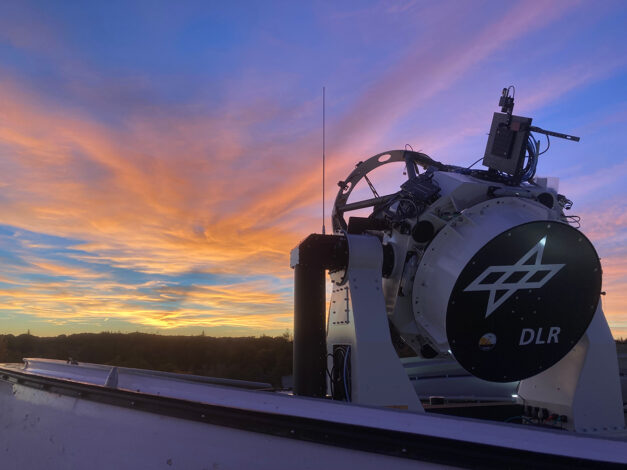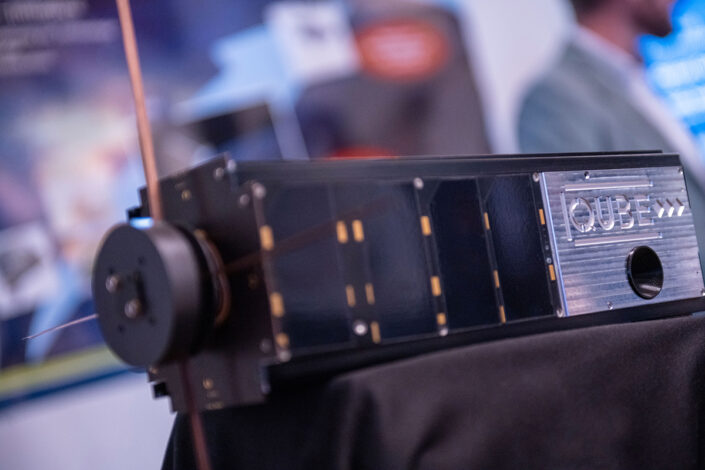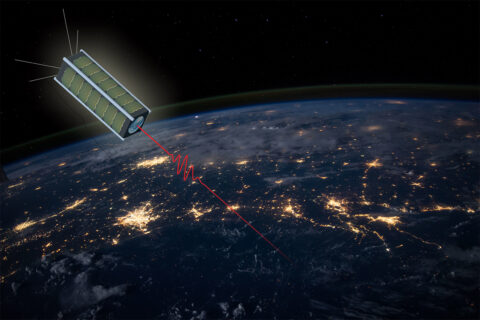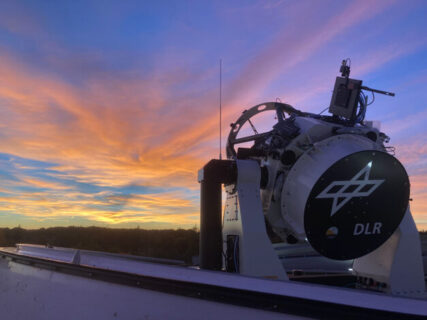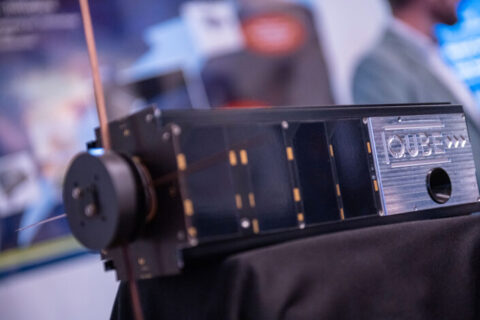The QUBE research mission funded by the German Federal Ministry of Research, Technology and Space (BMFTR), in which researchers from Friedrich-Alexander-Universität Erlangen-Nürnberg (FAU) are also involved, will test newly developed quantum communication technologies for the first time using miniature satellites in space. This will lay the foundation for ensuring the tap-proof, worldwide transmission of data in the future. Dr. Rolf-Dieter Jungk, State Secretary at the BMFTR, has now ceremoniously put the first German research satellite into operation.
In quantum key distribution, a secret bit sequence, the key, is generated by exchanging very weak light signals. The keys obtained in this way can be used for global, secure communication between the satellite and several ground stations. QUBE is the first European mini-satellite in space to test and further develop new components for quantum key distribution. QUBE is the size of a shoebox and weighs just 3.5 kg. This was achieved thanks to new miniaturization technologies, both for the satellite and for the quantum payloads and laser communication terminal.
Miniaturized quantum experiments under extreme conditions
After years of research, the time has finally come: the interdisciplinary QUBE consortium was recently able to achieve an optical connection between the satellite and the ground station. During the overflight at an orbital altitude of 480 km, the attitude control system must align the satellite with the ground station in order to precisely hit the 80 cm diameter receiver mirror with the laser on board the tiny satellite. And despite a speed of around 27,500 km/h, this alignment must be maintained for around 10 minutes during the entire overflight. “The attitude control system achieves top accuracy and alignment stability for satellites in this size class,” says ZfT Executive Director Prof. Dr. Klaus Schilling, at whose institute the system was designed and built. DLR project manager Benjamin Rödiger also sees this demonstration as an important success for optical communication: “The satellite’s light beam could be tracked for several minutes. This proves the excellent interaction of the attitude control with the precise control of our laser terminal and the optical ground station”.
“This really is a milestone, now the work with the quantum modules can begin,” says Harald Weinfurter, Professor of Experimental Quantum Physics at Ludwig-Maximilians-Universität München (LMU). “Our miniaturized quantum random number generator and all other components for quantum communication were developed in such a way that they remain fully functional even under the extreme vibration, temperature and radiation loads during launch and during use in space,” explains Prof. Dr. Christoph Marquardt, holder of the Chair of Optical Quantum Technologies at FAU. The experience gained will be used in the construction of the second satellite, QUBE-II. “This satellite is more than twice the size. Thanks to better optics and extended quantum modules, it can carry out secure key exchange,” says Janko Janusch, project manager at OHB and coordinator of the second phase of the QUBE initiative. QUBE-II is scheduled to be launched in summer 2026.
Further information:
Prof. Dr. Christoph Marquardt
Chair of Optical Quantum Technologies
christoph.marquardt@fau.de
